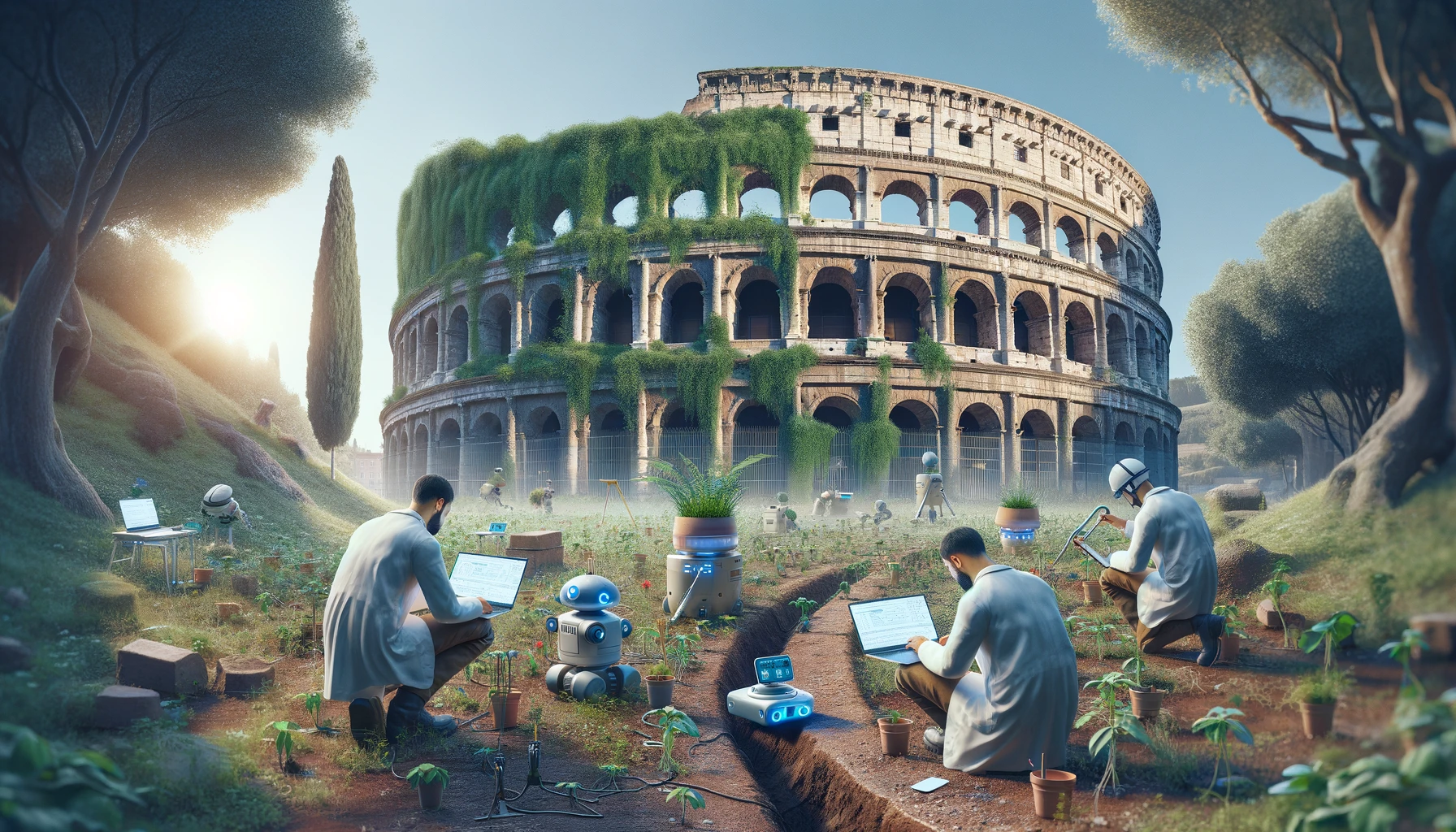Early Projects
Species classification in the Parco Archeologico del Colosseo

In retrospect, the archaeological park in Rome embarked on a remarkable journey to enhance its preservation efforts through the development of an innovative app designed for weed detection. In the pursuit of scientific excellence, the park’s team harnessed the power of Convolutional Neural Networks (CNNs) and advanced transfer learning techniques, marking a significant leap in the realm of computer vision.
The project’s foundation lay in the utilization of CNNs, with particular emphasis on employing transfer learning methodologies. Commencing with pre-trained models, including the highly regarded ResNet50 architecture, provided a solid starting point. These pre-trained models, initially trained on the extensive Imagenet dataset, demonstrated remarkable potential for recognizing complex visual patterns.
Yet, the quest for precision and applicability drove the team to explore new horizons. An intriguing avenue emerged as the team considered the potential benefits of pretraining these neural networks on specialized plant datasets. The transformative Plantnet 300k dataset, with its extensive collection of botanical images, became a focal point of investigation.
By incorporating knowledge derived from plant-centric datasets, the team sought to refine the weed detection model further. The hypothesis was that fine-tuning these pre-trained networks on a dataset tailored to the unique characteristics of vegetation within the archaeological park could yield superior accuracy and reliability.
This pioneering endeavor at the archaeological park exemplifies the symbiosis between technological innovation and the preservation of historical heritage. The successful fusion of deep learning techniques and botanical expertise has not only elevated the accuracy of weed detection but has also set a precedent for future applications of AI in heritage conservation.
In retrospect, the implementation of these cutting-edge technologies has ensured the enduring legacy of Rome’s archaeological treasures, safeguarding them for generations to come.
Disease segmentation in Hyper Spectral Images

In the realm of Precision Agriculture, our mission led us to delve into the analysis of hyperspectral imagery to combat the threat of Esca disease that once loomed over our cultivated fields. In this bygone project, we embarked on a scientific journey that intertwined technology and agriculture, leaving an enduring legacy of innovation and insight.
Back then, our primary focus was on hyperspectral images, which provided a unique window into the health of our crops. These images consisted of vast volumes of data, with each pixel meticulously examined across the electromagnetic spectrum. For each pixel, we had access to hundreds of spectral reflectance bands, each representing a distinct portion of the spectrum.
This extensive dataset allowed us to peer into the very essence of our cultivated landscapes. It was akin to deciphering a visual code where each spectral band held the key to unlocking hidden information about the condition of our crops. These bands, like chapters in a book, told the story of the vegetation’s health and characteristics.
To effectively harness this wealth of information, we engaged in semantic segmentation tasks, meticulously unraveling the intricate details hidden within the hyperspectral images. Our objective was to categorize each pixel, discerning whether it represented healthy foliage, signs of stress, or the ominous presence of Esca disease. This semantic segmentation painted a vivid picture of the crop’s condition.
However, our journey didn’t end there. We sought to optimize the insights garnered from hyperspectral imagery by transforming it into multispectral data. This transformation involved selecting a subset of bands from the electromagnetic spectrum, simplifying the data while preserving its core information. It was akin to distilling knowledge from complexity.
Looking back, Precision Agriculture was an ambitious project that merged cutting-edge technology, data science, and agricultural expertise. Through hyperspectral imaging and semantic segmentation, we unveiled the hidden stories within our crops. These insights empowered us to make informed decisions, ensuring the health and vitality of our agricultural landscapes. It stands as a testament to the possibilities that emerge when science and technology converge in the pursuit of a more sustainable and secure food supply.
